Network Design Assignment: Upgradation Of Networking Infrastructure Of A Company
Question
Task:
Network Design Project
The purpose of this network design assignment is to design, plan, and implement a medium level network for a hypothetical client.
Information Gathering
You are a networking consultant who has been hired by a hypothetical company to evaluate their current network and propose changes to upgrade it. Your job is to prepare a “Network Upgrade Plan” that includes the following.
The following information is obtained during some hypothetical interviews with selected number of the staff.
- Physical Structures Offices LAN Clients
- Wireless Clients Servers<
- Hosting and Internet Users
- Firewalls and DMZ
- Internet Support Shared Resources
Provide the detailed information about the buildings, floors, and the measurements.
How many offices does your client have? Are they already connected? Provide the categories of clients (perhaps one category per department) and number of clients per category
Provide the maximum number of wireless clients. Do you support public clients?
Or would you use peer-to-peer or centralized network? How may servers do your client have? Provide types and number of Servers that are required by the network, i.e. File servers, Domain Servers, Name Servers, etc. (see internet hosting for alternate configuration)
How to do support internet users? How has your internet domain been hosted (internally or via a hosting provider). Where is the company mail server located? Do you support file transfer? How internet users access resources on the private network?
If applicable, identify the zones of the network nodes, and specify how public servers are accessed from the Internet
How do the employees access the internet?
List all types of shared resources that are used in the network (i.e. printers, file servers, etc.)
Provide the status quo as well as the deaired quota that the client is requesting. List the network needs (what’s not working at the moment). This may be a list of issues and how to resolve them at a high-level.
Since the client is hypothetical, the status quo may be bare minimum.
Network Design
Outline the Network Design. Include the following information in your proposal:
- Number of networks and subnets; addresses and VLANs; DHCP reservations, etc.
- Number (and models) of network equipment (i.e. routers, switches, hubs, modems, access
points, etc.)
- Number, type, and measurement of the connecting cables (see structured cabling).
Packet Tracer Implementation
Implement the proposed network in packet tracer. The packet tracer file includes the network simulation of the logical network.
Your implementation must include the following:
- Include all user types as subnetworks and include some examples of users as nodes on the subnetwork. One node per category would suffice.
- Include shared resources as needed: i.e. file servers, web servers, networked printers, etc.
- Ensure that all notes are properly configured with IP addresses, subnet masks, default gateways,
etc.
- Ensure that ping works across the board.
- Manually configure or use DHCP for IP address configuration.
- Manually configure or use RIP for routing configuration.
Future Upgrade
Include and plan the clients’ future needs in your implementation. Examples of possible future need is given in the following:
- How many workstations does the current network have? How many workstations will the network need in a year from now?
- How about connection speeds? Wireless Access Points?
Cost Estimation
Provide the implementation cost. Your estimate includes all network devices, computer upgrades (software or hardware), as well as Labour.
Make a list of all your network elements (based on your Packet Tracer simulation) and research the cost of each. Tally up the total cost of your network and explain why your client should spend this money to upgrade their network. Can you take any cost-saving measures?
Answer
Introduction
The report on network design assignment is focused to design an upgraded network infrastructure for a hypothetical company. The company has an existing poor network infrastructure that creates several problems for the staff of the organization as the internet speed of the existing network is very low, security is very low, as well as there is wireless connectivity. Therefore, in this report, upgraded network infrastructure will be developed for the company by considering the business needs and future requirements of the company. Furthermore, the network design has been configured in the cisco packet tracer application.
Discussion
Existing Network Design
By conducting some hypothetical interviews, various kinds of information regarding the existing network infrastructure of the company have been identified. Currently, the client has two offices which are located in separate geographical areas. The main office has four departments and a server room while the branch office is a single floored building which has two departments. Due to the poor network infrastructure, both the offices are not connected with each other. The security of the existing network is also very poor as there is no firewall and DMZ. From the interview, it is also has been identified that the five departments of the main office are comms room, admin, sales, HR. Each of the departments of the main office has 25 workstations. Currently, the company is connected to an ISP that helps the company to support internet users. All the servers of the company including the mail server are located in a server room but the security of the server room is very poor. The company also utilizes a file server to share the resources.
Status Quo
The current situation of the company is provided below:
- Currently, the company has two offices – one is the head office and another is the branch office but due to poor network infrastructure both the office is not connected with each other.
- The security infrastructure of the existing company’s network is also very poor due to the unavailability of proper security mechanisms and security tools (Francis et al. 2018).
- Currently, the company has a centralized network that is very easy to manage and implement but it has several disadvantages in terms of reliability and security.
- The network has lacks servers. Currently, the network has only one server which is located in the head office but it is not accessible from the branch office.
- The internet speed of the existing network is very low.
- There is no wireless connectivity throughout the client's office.
- Currently, all the devices of the company are configured with the manual IP address that is bothersome and time-consuming (Thu 2018).
It also increases the chances of wrong IP address allocation. - The IP addressing plan has been developed using an FLSM method that increases
Current Needs
Currently, the company wants to upgrade its network by implementing some advanced technologies and components. The client has both functional and non-functional needs that are defined below:
Functional-Requirement:
- The company wants a secure connection between two offices so that employees can share resources at any time.
- The company needs a decentralized network with high reliability and security.
- A wireless network is required in the head office so that the employee can perform their necessary through their BYOD.
- The new network of the client needs several servers like DNS server, DHCP server, mail server, and file server.
- The company needs a simplified IP addressing plan for the network so that the network administrator can easily manage and assign the IP address to the networking devices (Part et al. 2017).
- The company also needs a cost estimation plan for upgrading the network infrastructure.
- Network redundancy is another functional requirement of the company.
Non-Functional Requirement:
Along with the above given functional requirement, the company has some non-functional requirements that are provided below:
- Security: It is one of the major non-functional requirements of the company. The company want’s higher security so that the employees of the company can share resources without any problem. The network should have a proper encryption mechanism to avoid infiltration into the network.
- Scalability: The scale of the hypothetical company’s supplied network should be compatible with a variety of modes so that it may be updated as needed. The addition or removal of certain network components can be used to make modifications (Liu et al. 2019). The network is required to designed in a way that the company can upgrade whenever necessary.
- Accessibility: the company wants the network should be only accessible for authorized users. For the employees of the company, the network should be highly accessible and they can also access the network wirelessly from their respective devices.
- Availability: The network should be highly available for all the users throughout the year. The downtime of the network should be very low.
- Therefore, by considering both the functional and non-functional requirements of the company, the network is needed to be designed and implemented.
Proposed Network Design
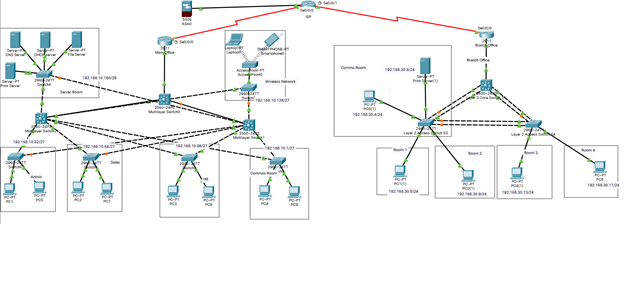
Figure: Proposed Network Design
The above figure illustrates the new network infrastructure of the hypothetical company. The network has been upgraded by considering both the current and future needs of the company. For designing the network infrastructure, various kind of advanced networking components and technologies has been utilized. The above figure illustrates that both the offices of the company are connected through the ISP. The Main office comprises four departments and a separate server room. The server room comprises different types of servers such as DNS server, DHCP server, file server, and print server. The network design has been developed by considering the hierarchical network design model. The network design model comprises three layers and each layer has specific functions (Fernandez et al. 2018). All the end devices have been connected to the access layer switches. In order to ensure connectivity between these two branches, the RIP routing protocol has been utilized and it allows the router to forward and receive data packets. All the end devices of the network have been configured with a DHCP IP address.
The network design has the capability to meet all the functional and non-functional requirements of the company as the network infrastructure has been redesigned by considering all the existing issues of the network. For security purposes, a firewall also has been placed in the network infrastructure that will monitor as well as protect the network from various kinds of security issues. Furthermore, the network has been segregated with the VLAN to reduce network congestion and provide better internet services.
IP address plan
The IP addressing plan for the company is provided below:
Main Office LAN
|
Subnet Name |
Needed Size |
Allocated Size |
Address |
Mask |
Dec Mask |
Assignable Range |
Broadcast |
|
Comms Room |
25 |
30 |
192.168.10.0 |
/27 |
255.255.255.224 |
192.168.10.1 - 192.168.10.30 |
192.168.10.31 |
|
Admin |
25 |
30 |
192.168.10.32 |
/27 |
255.255.255.224 |
192.168.10.33 - 192.168.10.62 |
192.168.10.63 |
|
Sales |
25 |
30 |
192.168.10.64 |
/27 |
255.255.255.224 |
192.168.10.65 - 192.168.10.94 |
192.168.10.95 |
|
HR |
25 |
30 |
192.168.10.96 |
/27 |
255.255.255.224 |
192.168.10.97 - 192.168.10.126 |
192.168.10.127 |
|
Wireless Network |
25 |
30 |
192.168.10.128 |
/27 |
255.255.255.224 |
192.168.10.129 - 192.168.10.158 |
192.168.10.159 |
|
Server Room |
10 |
14 |
192.168.10.160 |
/28 |
255.255.255.240 |
192.168.10.161 - 192.168.10.174 |
192.168.10.175 |
Branch Office LAN
|
Subnet Name |
Needed Size |
Allocated Size |
Address |
Mask |
Dec Mask |
Assignable Range |
Broadcast |
|
Branch Office |
25 |
30 |
192.168.30.0 |
/27 |
255.255.255.224 |
192.168.30.1 - 192.168.30.30 |
192.168.20.31 |
WAN
|
Subnet Name |
Needed Size |
Allocated Size |
Address |
Mask |
Dec Mask |
Assignable Range |
Broadcast |
|
Branch Office |
25 |
30 |
192.168.30.0 |
/27 |
255.255.255.224 |
192.168.30.1 - 192.168.30.30 |
192.168.20.31 |
The IP addressing plan has been developed by considering the future growth of the company. Several spare IP addresses has been allocated so that the company can assign IP to the new workstations whenever required.
Hardware requirement and cost estimation plan
The network design has been developed by utilizing various types of networking components. The cost estimation plan for designing the network infrastructure is provided below:
|
SL No. |
Component Name |
Manufacturer Company |
Specification |
Number of devices required |
Costs/Item in $ |
Total Cost in $ |
|
1 |
Router |
Cisco |
Cisco 2811 router with 2 serial port and 2 gigabit Ethernet port |
2 |
216 |
532 |
|
2 |
Network Switches |
Cisco |
24 port gigabit Ethernet |
12 |
135 |
1620 |
|
3 |
Wireless Access Point |
NETGEAR |
Dual-Band Wi-Fi, 4 X 1G Ethernet ports |
4 |
90 |
360 |
|
4 |
Serial Cable |
DTECH |
RJ-45 Connector, 3 m long |
2 |
5 |
10 |
|
5 |
ETHERNET Cable |
DETCH |
Cat-6 cable, RJ-45 connector |
100 |
10 |
1000 |
|
6 |
Firewall |
Cisco |
Protectli Vault 2, 2 port |
199 |
2 |
398 |
|
7 |
Network Monitoring tool |
Zabbix |
Real-time network monitoring tool, complete network protection |
1 |
Open-Source |
- |
|
8 |
Windows 10 pro OS |
Microsoft |
Operating system |
1 |
129 |
129 |
|
9 |
Upgradation of software’s like MS Office suite |
|
|
|
|
550 |
|
10 |
Labour Cost |
- |
- |
- |
- |
1200 |
|
|
Total Cost |
|
|
|
|
5799 |
Therefore, around $6000 is required to upgrade the network.
Packet Tracer Implementation of the proposed network
Network Diagram
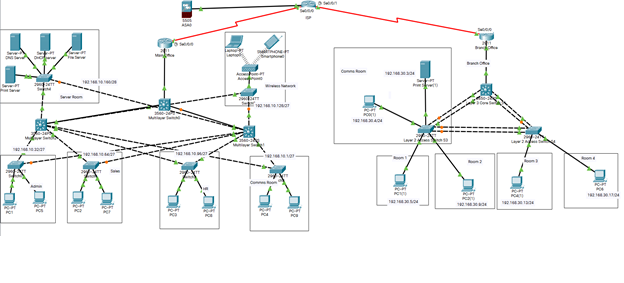
Router Configuration
IP configuration
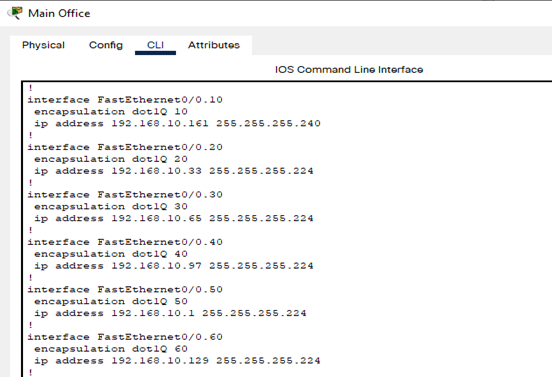
DHCP configuration
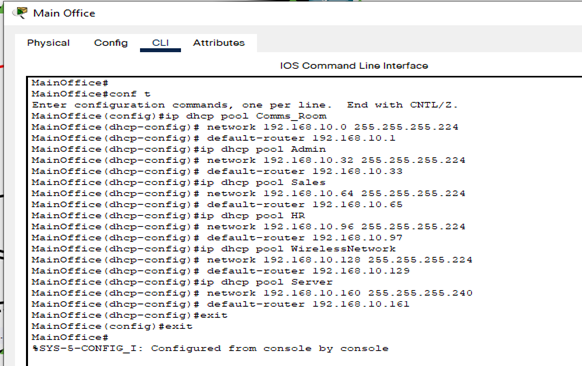
Switch Configuration
VLAN Configuration
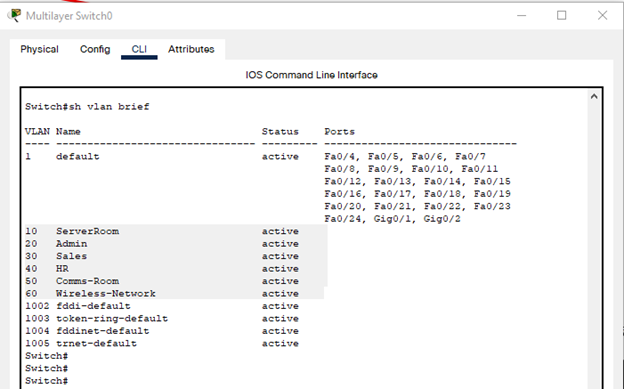
VTP status
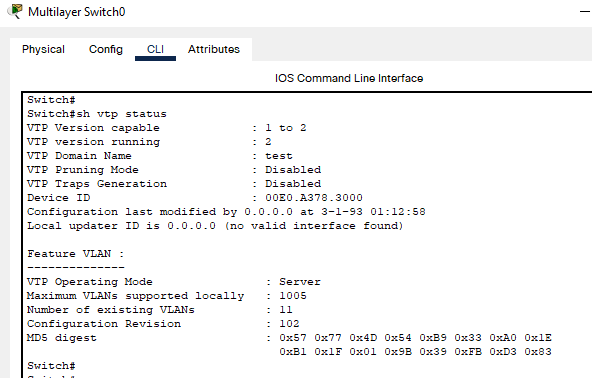
Trunking configuration
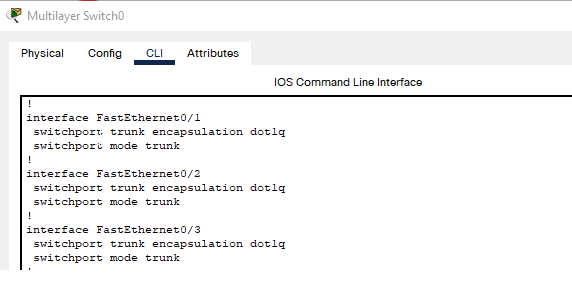
Access point configuration
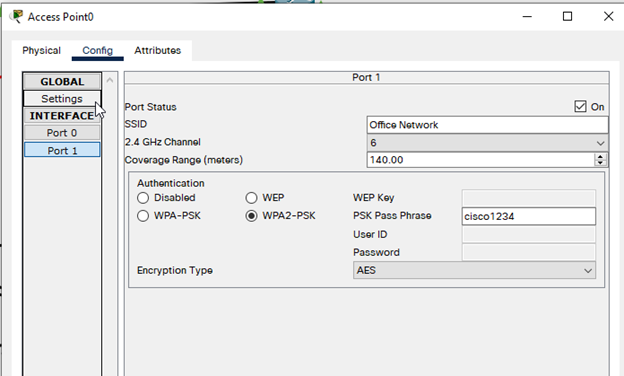
Routing protocol configuration
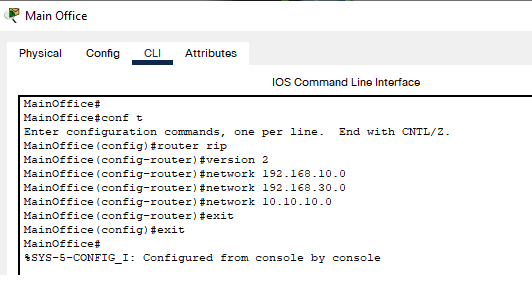
PC configuration
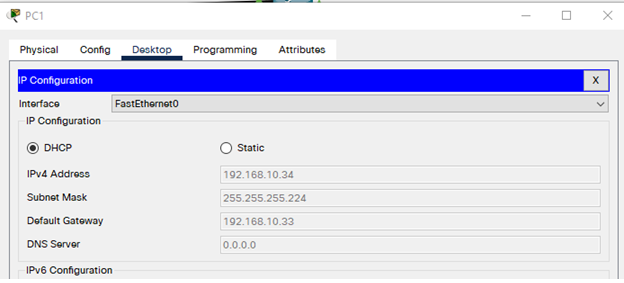
Server Configuration
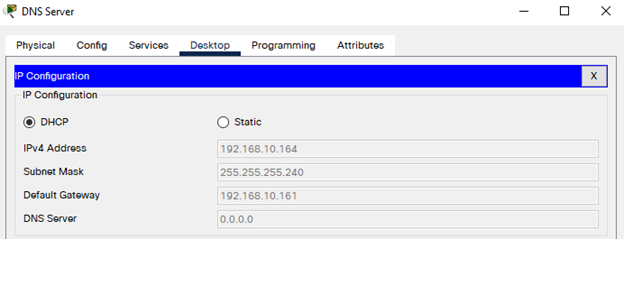
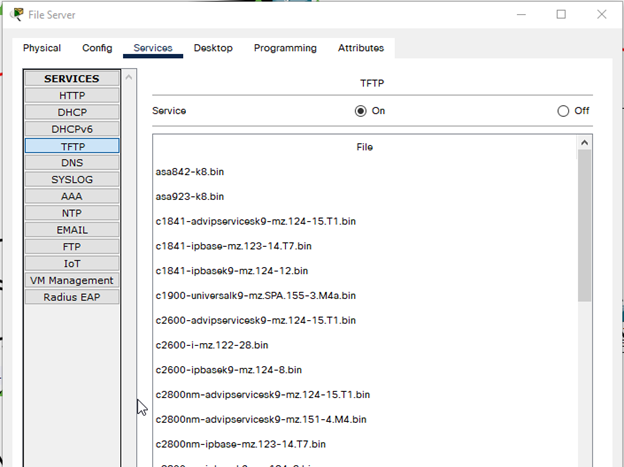
Connectivity Test
Ping from Sales department PC to DNS server
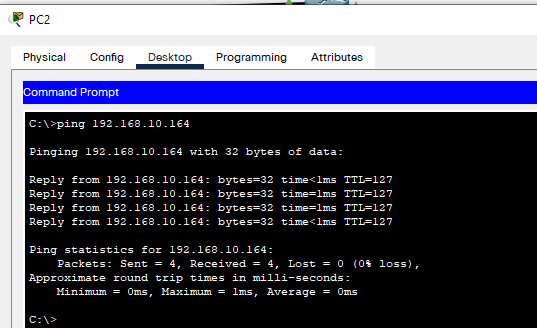
Ping from HR department pc wireless laptop
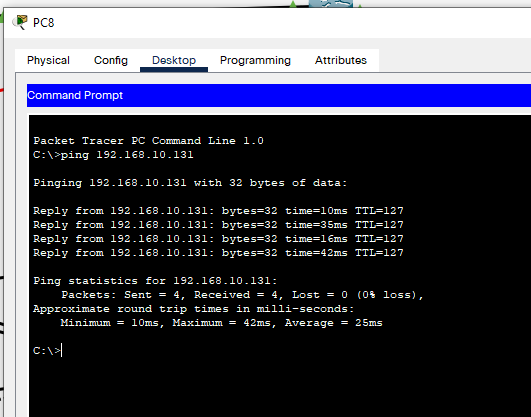
Ping from main office PC to branch office PC
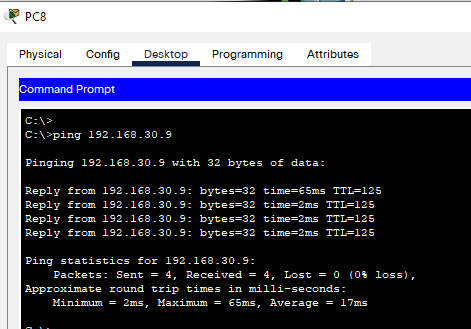
Conclusion
In this report, a network upgrade plan has been developed for hypothetical company bet considering their current and future requirement. The existing problem of the company has been analyzed as well as the future requirement of the company has been explored in the report. Furthermore, the proposed network has been implemented with the cisco packet tracer application. Finally, a cost estimation plan along with the hardware requirement for upgrading the network also has been developed in this report.
References
Aye, M.M. and Soe, Z.C., 2019. Design and Simulation of Secure Network for University Campus.
Fernandez, S.A., Juan, A.A., de Armas Adrián, J., e Silva, D.G. and Terrén, D.R., 2018. Metaheuristics in telecommunication systems: network design, routing, and allocation problems. IEEE Systems Journal, 12(4), pp.3948-3957.
Francis, A., Stanley, U., Enehizena, O.N., Olu, V.M., Peter, A. and Nkordeh, N., 2018. Design and analysis of a broadcast network using logical segmentation. Telkomnika, 16(2), pp.803-810.
Liu, Y., Kashef, M., Lee, K.B., Benmohamed, L. and Candell, R., 2019. Wireless network design for emerging IIoT applications: Reference framework and use cases. Proceedings of the IEEE, 107(6), pp.1166-1192.
Park, P., Ergen, S.C., Fischione, C., Lu, C. and Johansson, K.H., 2017. Wireless network design for control systems: A survey. Network design assignment IEEE Communications Surveys & Tutorials, 20(2), pp.978-1013.
Pawar, S., Ugale, V.D., Nirmal, A., Badgujar, P. and Borade, S., 2020. A Review On: NETWORK DESIGN FOR COLLEGE CAMPUS. IJRAR-International Journal of Research and Analytical Reviews (IJRAR), 7(1), pp.129-130.
Refat, C.M.M., 2018. Design and Performance Evaluation of a Campus Network Based on Different Routing Protocols (Doctoral dissertation, IIUC Central Library).
Thu, D.K.A., 2018. Simulation of Campus Area Network using routing protocols. International Journal for Advance Research and Development, 3(9), pp.55-59.












